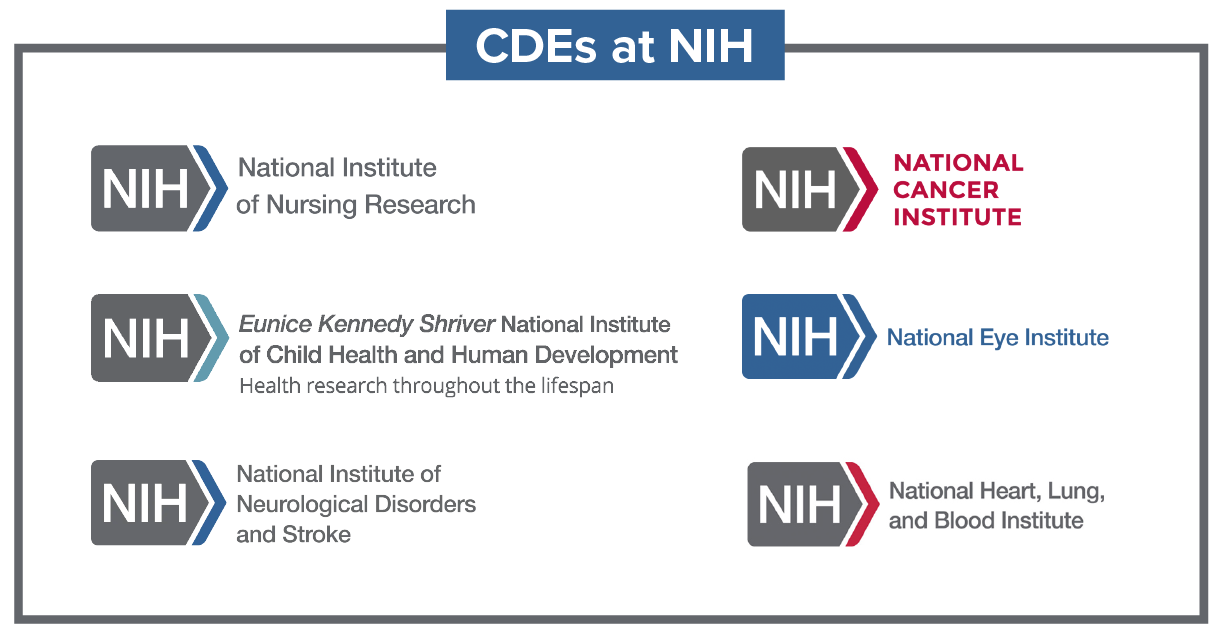Common Data Elements (CDEs)
How are CDEs Identified and Developed?
Usually, common data elements are identified in a top-down process by an NIH institute or other organization. Subject matter experts provide input for the selection of common data elements. They decide how questions should be asked and make recommendations for CDE format. Then the organization may require or recommend that their researchers use these CDEs.
Still, it can be hard for prospective researchers to figure out which "common" data element is the one they should use, and for working groups to identify high quality CDEs for reuse. Here are a few examples of NIH groups that have developed CDEs.
Another way that CDEs come to exist is when researchers and organizations coalesce around a recommended standard. The U.S. Core Data for Interoperability (USCDI) list we mentioned earlier was created from a partnership with the Assistant Secretary for Technology Policy/Office of the National Coordinator for Health Information Technology (ASTP), Duke Clinical Research Institute (DCRI), The Pew Charitable Trusts (Pew) and input from many healthcare organizations, such as the American Academy of Ophthalmology, Cystic Fibrosis Foundation, and Society of Thoracic Surgeons, among many others.
NIH CDE Repository
Some groups have their own repositories for their CDEs, but, in order to make CDEs more findable for NIH-funded researchers, NLM hosts the NIH CDE Repository. This provides a central access point to many NIH CDEs, including a growing selection of NIH-endorsed CDEs, which have been reviewed and approved by the NIH CDE Governance Committee. Additionally, the NIH CDE Repository serves as the primary home for CDEs from institutes that do not have their own CDE platform.
